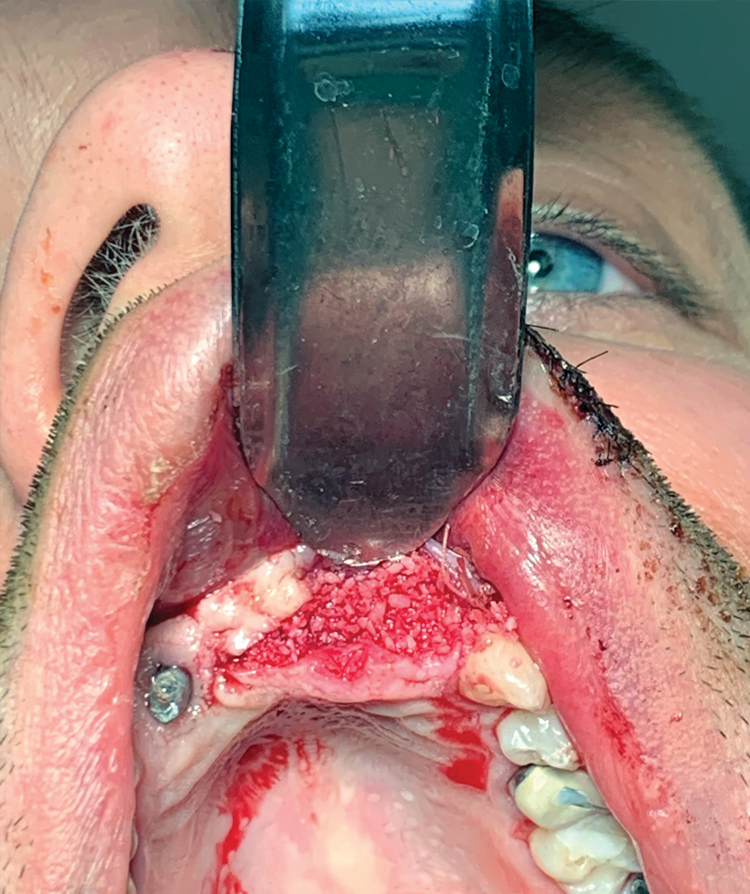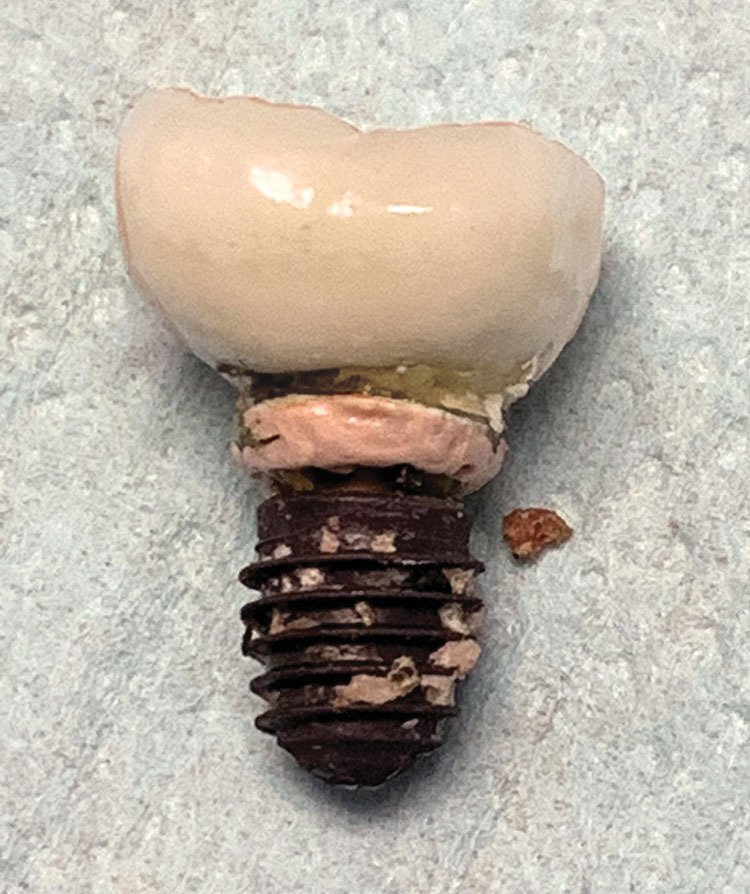Ailing and Failing Implants
Dr. Andrei Mark discusses some of the most common causes of ailing and failing implants and prevention strategies.
There is always the risk, however remote, that a dental implant may fail after therapy. On the other hand, there is a clear difference between a failed implant and one that is ailing. The distinction is that with prompt intervention it is possible to prevent an ailing implant from failing completely. The purpose of this article is to distinguish between an ailing and failing implant, as well as some of the most common reasons of failed implants, with the goal of preventing future failures and identifying potential treatment options. Additionally, this article will discuss the most effective diagnostic procedures for identifying failing implants and the recommended treatment options for reviving the implant.
Ailing vs. Failing
When an implant develops peri-implant mucositis without resulting in bone loss, it is referred to as "ailing." A "failing" implant, on the other hand, is one that is affected by peri-implantitis and significant bone loss. Survivability of the implant is highly dependent on the amount of bone loss, the state of the surrounding soft tissue, and the treatment method used.
Failing implants: Common causes
Cement. Improper cement application is a frequent cause of implant failure. This can happen if cement leaks from the crown during placement and becomes lodged below the gumline. If left untreated, the hardened cement can cause gum irritation, which can progress to infection and eventual bone loss. When placing crowns on abutments, dentists should use the thinnest possible coat of cement and remove any excess before fitting the crown in place.
Insufficient bone. Inadequate bone at the time of implant placement is one possible cause of failure. We prefer that the implant has a minimum of two millimeters of bone on all sides to ensure proper positioning and osteointegration. When an ailing or failing implant case is presented to us, we evaluate it to ascertain the cause and then tailor our treatment plan accordingly. Unfortunately, not every failing implant can be resurrected.
Inflammation. Poor oral hygiene is another common cause of failing implants due to infection and inflammation. Patients need to be reminded that implant restorations require the same good oral hygiene as natural teeth, along with routine visits to the dentist.
Diagnosing ailing implants
There are several symptoms that indicate ailing or failing implants—pain is a frequent one. Additionally, gum swelling, difficulty chewing, severe gum recession, and implant mobility are also common.
When a patient presents with a ailing implant, we take a 3D CT image. This allows us to view the implant and surrounding bone structure from any angle. If there is significant bone loss around the implant, the best therapy for an ailing or failing implant is to remove it using reverse torque where applicable. (see Figure 1.)
Ailing implant treatment options
When an ailing implant has experienced marginal bone loss, bone grafting techniques may be used to restore functionality. Once the implant surface has been cleansed meticulously on all surfaces and all unhealthy tissue removed, it is ready to receive a bone graft. In this instance, I choose to use the mineralized human bone mixed with PRF (Platelet-Rich Fibrin). My approach for making PRF involves drawing a small amount of blood from the patient and spinning it in a centrifuge to extract the platelets. After placement of the graft, the flap is sutured back in place. I like to allow three months for osteointegration of the bone graft and implant. (see Figure 2.)
Failing implant treatment options
In cases where a failing implant results in significant bone loss, the only option is to remove it. (see Figure 3.) The technique for removal will depend largely on the condition of the implant and the surrounding tissue. Once removed, the next stage is to debride the unhealthy granulation tissue, reach a stable base of bone, and then graft the region to grow more bone utilizing that base. Once again, the graft material I use consists of PRF with mineralized freeze-dried bone. In my experience, the bone in these areas grows back once the offending implant, which was the source of the irritation, is removed. Then, after three months, we reassess to determine how much bone has grown back before starting over with a new implant.
Predictable results
Now, unlike a natural tooth, which will be very loose with a few millimeters of bone attached to the root, well integrated implants with a few millimeters of bone can be very stable. An implant with five millimeters of bone attached to it is almost impossible to remove without a lot of force, reverse torque, or trephining the bone. These implants, in my experience, can still retain the prosthesis if the patient can reach in and maintain good oral hygiene. Additionally, if multiple implants are placed and splinted together, they will be extremely solid and will not move even when severe bone loss has occurred.
Advanced techniques
I've seen hundreds of failed implant cases over the years, many with an extremely poor prognosis for implant survival. In many of these instances, the clinician providing the treatment lacked experience or was operating outside of his or her comfort zone. This is understandable given that the majority of dental implant training today is focused on placement. I've discovered that by combining advanced surgical techniques with bone grafting, we've been able to resurrect a large number of failing implants.■
Benefits of PRF
Platelet rich fibrin (PRF) has been shown in several studies to be a healing biomaterial with a high potential for bone and soft tissue regeneration. It can be taken alone or in combination with bone transplants to promote hemostasis, bone growth, and maturation. In elderly patients, PRF looks to be a natural and useful aid in bone regenerative surgery, with excellent outcomes and few problems.



